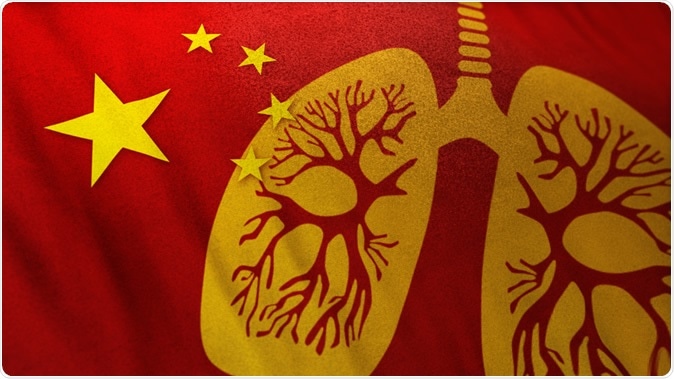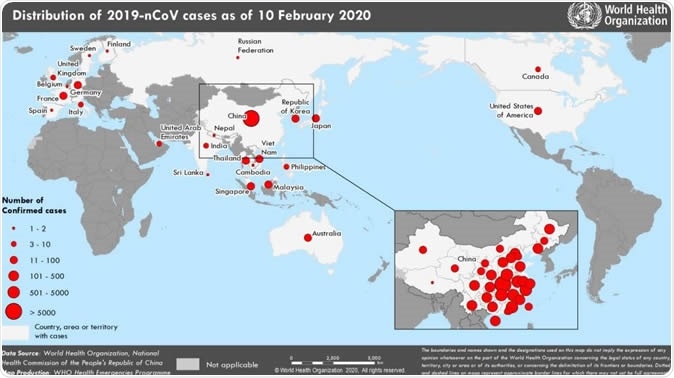The Wuhan coronavirus or novel coronavirus (2019-nCoV) has started to spread in a seafood market in Wuhan China before New Year of 2019 and has since spread to 25 countries and has infected more than 40,000 people. The death toll has surpassed that of the SARS outbreak in 2002-2003, and new developments in the virus’s mode of transmission raise alarm worldwide.

Image Credit: Remotevfx.com / Shutterstock
A Chinese official has confirmed that aside from the previously known mode of transmission of the deadly virus, it is possible to spread via aerosol transmission, making it more likely to spread at a faster rate.
“Aerosol transmission refers to the mixing of the virus with droplets in the air to form aerosols, which causes infection after inhalation, according to medical experts,” Zeng Qun, deputy head of the Shanghai Civil Affairs Bureau, said in a statement during a daily briefing by the municipal government. “As such, we have called on the public to raise their awareness of the prevention and control of the disease caused by family gatherings,” Zend added.
Mode of transmission
A pathogen’s mode of transmission refers to the route or method an infectious microorganism is transferred, moved, or carried from one place to another, before reaching a new host. It can be through direct or indirect contact, airborne, droplet, or vector, and common vehicle, the Winnipeg Regional Health Authority reports.
Health experts also report that direct transmission is characterized by the transfer of the pathogen through inhalation of air close to a patient who coughs or sneezes. On the other hand, contact transmission happens when an individual touches an object contaminated with droplets containing the virus. The virus can spread if the person touches his nose, mouth, or eyes.
Aerosol transmission of airborne mode refers to situations where droplets nuclei, which are residue from evaporated droplets or dust particles that contain pathogens or disease-causing microorganisms are suspended in the air for long periods. The microorganisms can survive in the air and outside the body until another host inhales it.
If the coronavirus can be transmitted via aerosols, the rate of infection is faster, and the spread is harder to contain.
However, Feng Luzhao, a Chinese Center for Disease Control and Prevention researcher said that there is no hard proof that the virus can spread through aerosols. He added that there is no need for the public to panic and the most common mode of transmissions are direct transmission, which is the inhalation of air close to a patient who coughs or sneezes.
Current death toll confirmed cases
As of writing, the coronavirus death toll has surpassed that of the SARS outbreak in 2002-2003. As of February 10, the death toll tops 910, with 97 deaths in just one day in mainland China. Globally total confirmed cases reached 40,554 after an additional 3,085 new cases in 24 hours.

Countries, territories or areas with reported confirmed cases of 2019-nCoV, 10 February 2020
Two deaths were recorded outside mainland China, one in the Philippines and the other from Hong Kong. The United States reports that the first American who has died due to the coronavirus has succumbed to the illness in Jinyintian Hospital in Wuhan.
From 2002 to 2003, the SARS outbreak, which also began in China, has killed 774 people across the globe. Many health experts believe that the high number of deaths and infections are undercounted due to the severe strain of testing facilities. Worldwide, surgical masks and other protective equipment are running low in supply.
Chinese officials have officially named the disease, novel coronavirus pneumonia (NCP), which is characterized by the common signs and symptoms of pneumonia. However, the disease may lead to complications, including acute respiratory distress, severe acute respiratory syndrome, and even death. The common signs and symptoms include cough, fever, shortness of breath, and difficulty breathing.
How to prevent coronavirus infection
The World Health Organization (WHO) has urged residents to steer away from large crowds, such as gatherings and parties. Health officials also encourage residents to maintain good ventilation at home through open windows and to prevent infection, they should wash their hands regularly, especially after touching common surfaces, including doorknobs, toilet seats, and dinner tables.